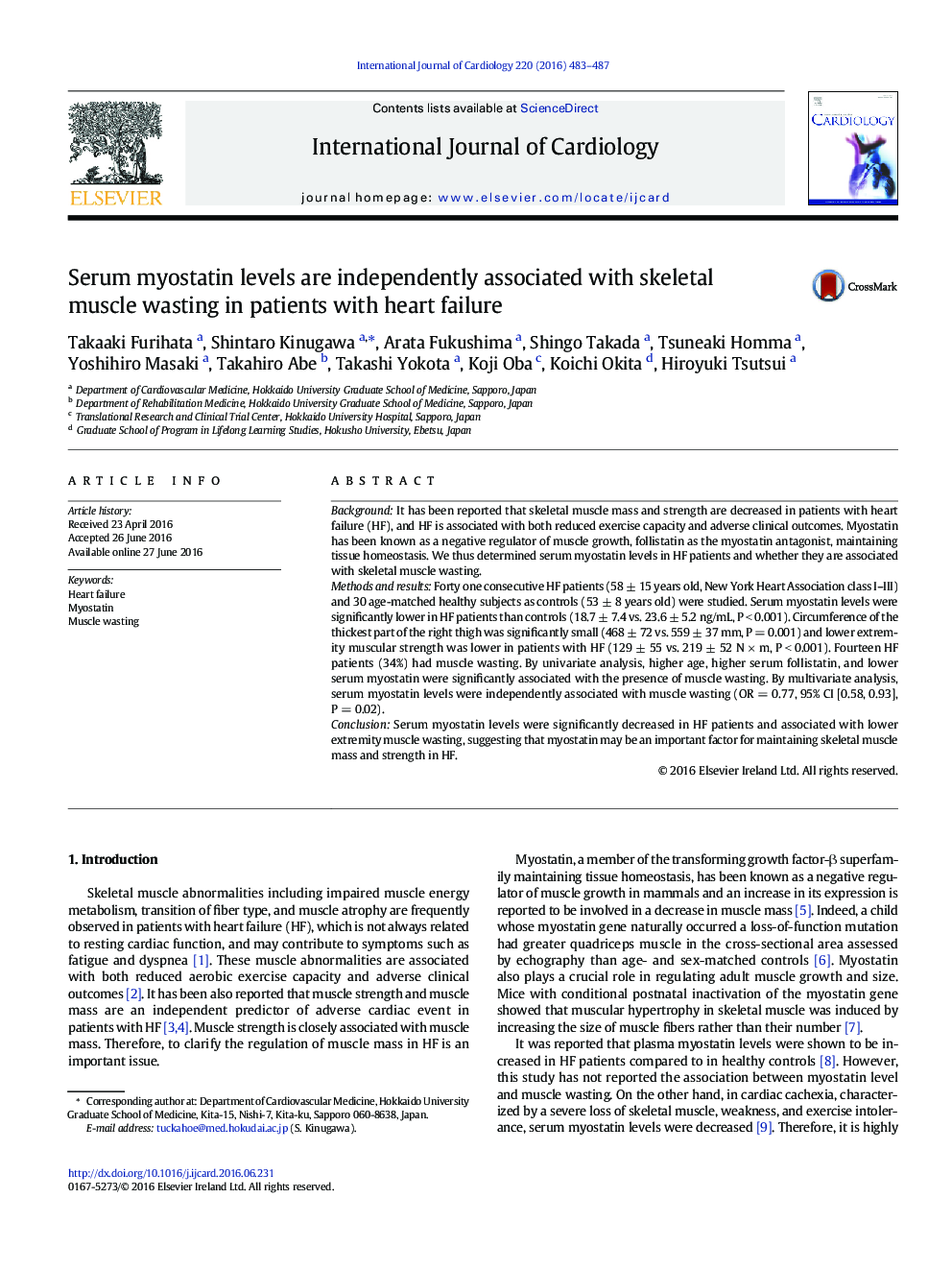| Article ID | Journal | Published Year | Pages | File Type |
|---|---|---|---|---|
| 5963552 | International Journal of Cardiology | 2016 | 5 Pages |
BackgroundIt has been reported that skeletal muscle mass and strength are decreased in patients with heart failure (HF), and HF is associated with both reduced exercise capacity and adverse clinical outcomes. Myostatin has been known as a negative regulator of muscle growth, follistatin as the myostatin antagonist, maintaining tissue homeostasis. We thus determined serum myostatin levels in HF patients and whether they are associated with skeletal muscle wasting.Methods and resultsForty one consecutive HF patients (58 ± 15 years old, New York Heart Association class I-III) and 30 age-matched healthy subjects as controls (53 ± 8 years old) were studied. Serum myostatin levels were significantly lower in HF patients than controls (18.7 ± 7.4 vs. 23.6 ± 5.2 ng/mL, P < 0.001). Circumference of the thickest part of the right thigh was significantly small (468 ± 72 vs. 559 ± 37 mm, P = 0.001) and lower extremity muscular strength was lower in patients with HF (129 ± 55 vs. 219 ± 52 N Ã m, P < 0.001). Fourteen HF patients (34%) had muscle wasting. By univariate analysis, higher age, higher serum follistatin, and lower serum myostatin were significantly associated with the presence of muscle wasting. By multivariate analysis, serum myostatin levels were independently associated with muscle wasting (OR = 0.77, 95% CI [0.58, 0.93], P = 0.02).ConclusionSerum myostatin levels were significantly decreased in HF patients and associated with lower extremity muscle wasting, suggesting that myostatin may be an important factor for maintaining skeletal muscle mass and strength in HF.
